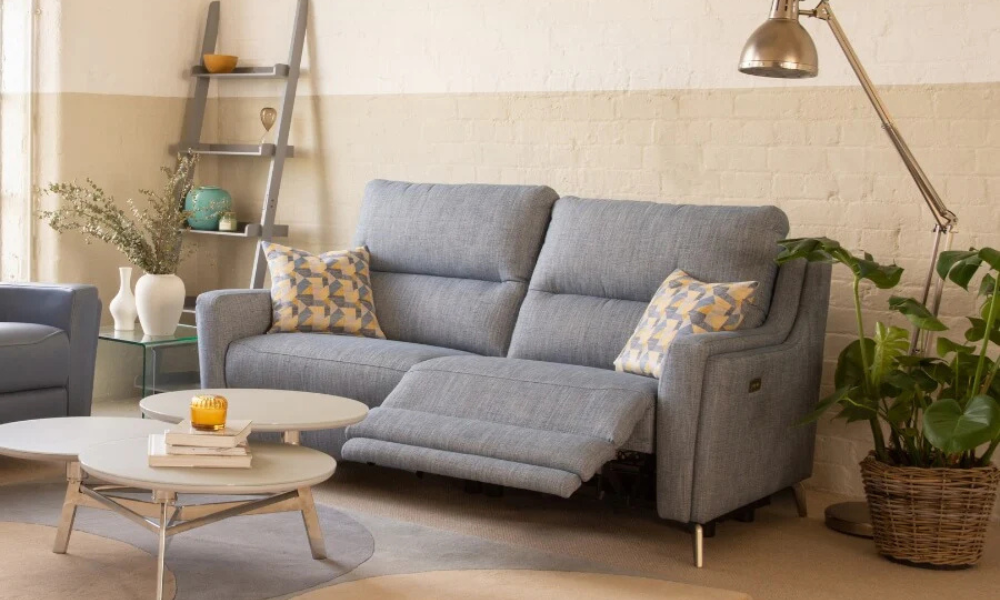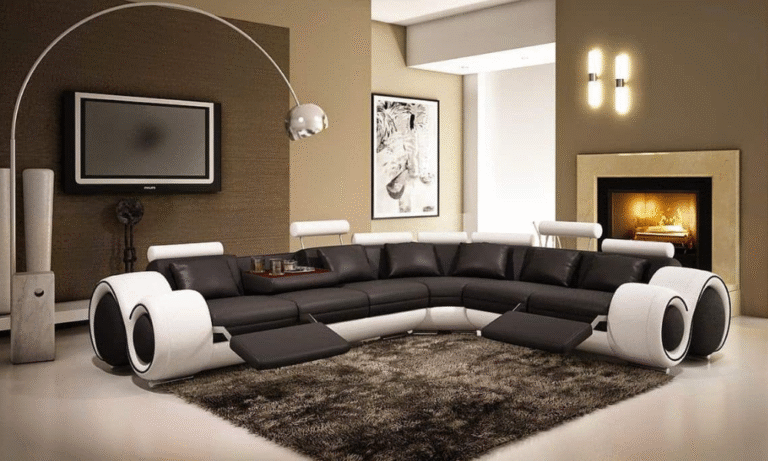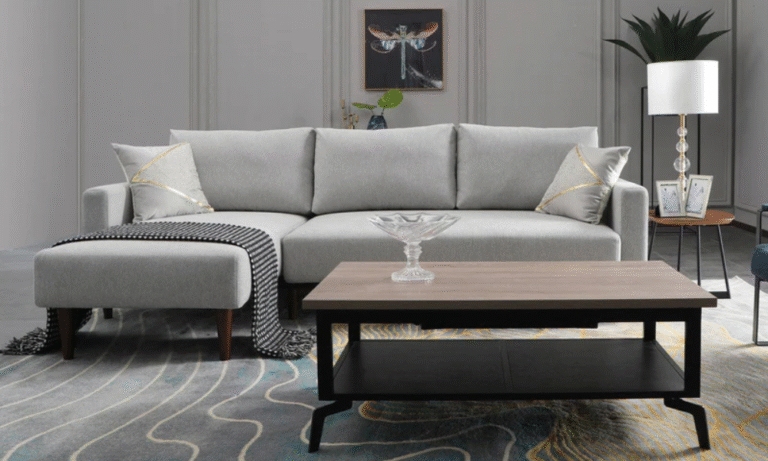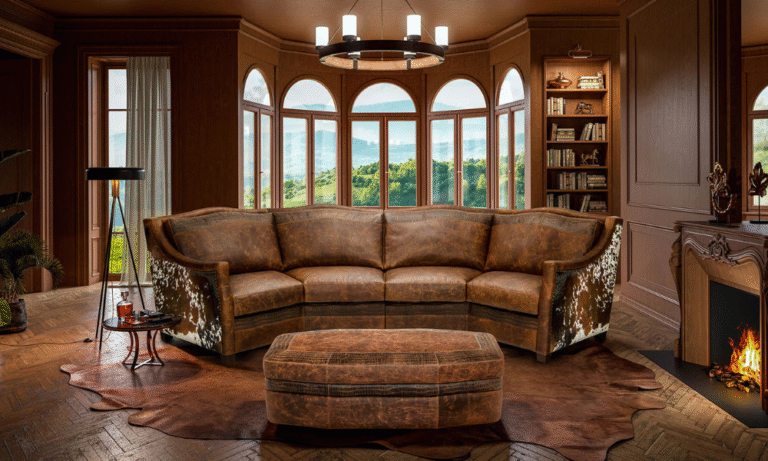Estimated reading time: 11 minutes
Last updated on August 22nd, 2025 at 03:11 am
Purchasing a sofa can be both a thrilling and daunting endeavor. There are so many options available on the market that it’s easy to make mistakes that you’ll later regret. Whether you are furnishing a new home or replacing an old sofa, it is essential to avoid common errors.
In this blog, we will discuss some of the most common mistakes people make when purchasing a sofa and provide helpful information to assist you in making an informed choice.
From ignoring the sofa’s size and proportions to ignoring its durability and functionality, these errors can result in dissatisfaction and squandered money.
By knowing what to look out for, you can confidently navigate the sofa-buying process and find a piece that not only matches your style but also meets your requirements for comfort and durability.
Why Choosing the Right Sofa Matters?
Choosing the proper settee is crucial for multiple reasons:
Comfort: Your settee should provide you and your family with comfortable seating. It should have sufficient padding, support, and seat depth to accommodate various body types and preferences. A well-selected sofa enables you to decompress, relax, and spend quality time with loved ones.
A high-quality settee is constructed to withstand daily use and last for many years. You will not have to worry about premature wear, sagging cushioning, or structural issues if you purchase a durable sofa.
To ensure the longevity of your settee, it is essential to consider the frame construction, upholstery materials, and overall craftsmanship.
Style and Aesthetics: Your sofa significantly contributes to the overall appearance and atmosphere of your living room. It establishes the tone for your interior design style, whether modern, traditional, rustic, or eclectic.
Choosing a sofa that complements your existing decor and personal preferences improves the aesthetic appeal and cohesion of your living space.
Your sofa should fulfill your specific functional requirements. Consider factors such as the number of seats, the availability of additional features such as reclining mechanisms or sleeper options,
and the size and shape that best complement the architecture of your living room. A well-selected sofa improves the space’s functionality and usability.
Since a sofa is a significant investment, selecting the appropriate one ensures long-term satisfaction. It is essential to choose a sofa that matches your preferences, lifestyle, and aesthetic vision, as it is a piece of furniture that you’ll interact with daily.
When you make an informed decision, you are more likely to enjoy your sofa without remorse for years to come.
Common Mistakes When Buying a Sofa

Photo Credit: loungelovers
Neglecting to Measure Your Space
Neglecting to accurately measure your living room space before purchasing a sofa can result in a number of complications. Here are a few potential issues that could arise:
You may wind up purchasing a sofa that is either too large or too small for your living room if you do not take accurate measurements. A settee that is too large for the room can make it feel cramped and impede the flow of movement.
Conversely, a sofa that is too small may appear out of proportion and fail to provide sufficient seating for you and your visitors.
When purchasing a sofa, it is essential to take into account the dimensions of your doorways, corridors, and stairs. If the settee is too large, it might not fit through the door, or it might be difficult to move it into the desired room. This can cause unneeded hassle and potentially cause damage to the sofa or your residence.
Uneven spacing: A sofa that does not suit the available space properly can create an unbalanced and aesthetically unappealing arrangement.
It may result in awkward gaps or irregular spacing between pieces of furniture, disrupting the aesthetic harmony of your living room.
Before shopping for a sofa, measure your living room space precisely to prevent these issues. Consider the room’s layout and configuration, taking into account any obstacles or restrictions that could impact the placement of the sofa.
Creating a floor plan or using online tools that allow you to visualize how the sofa will fit in your space is also helpful.
You can find a sofa that fits precisely, enhances the aesthetics of your living room, and promotes a comfortable and functional environment by measuring carefully and considering the dimensions of the sofa you intend to purchase.
Not Considering the Sofa’s Usage
You are entirely correct. A common error that can result in dissatisfaction or practical issues is failing to consider the intended use of the settee. Here is why it is essential to contemplate the sofa’s function:
Seating Capacity: Knowing how the settee will be utilized aids in determining the ideal seating capacity. If you frequently host visitors or have a large family, a sofa with a large seating area or a sectional sofa may be more appropriate.
If the sofa is predominantly for personal use or if the living space is small, a compact or loveseat-sized sofa may be more suitable.
Durability and Upholstery: Considering the sofa’s purpose enables you to select a fabric that can withstand the daily rigors of use. For example, if you have children or pets, a microfiber or leather sofa with stain-resistant fabric may be a practical choice.
Alternatively, if the sofa will be used less frequently or in a more formal setting, comfort and aesthetics may take precedence over extraordinary durability.
Functionality: The sofa’s intended use can influence the features and functions you require. For instance, if you frequently want to recline and unwind, a sofa with reclining seats or a chaise lounge may be alluring.
Alternatively, a settee with built-in storage compartments can be useful if you require additional storage space.
Consideration of the sofa’s utilization ensures its durability and longevity. By choosing a sofa that fits your lifestyle and requirements, you can reduce the likelihood of premature wear and tear, ensuring that it will last for many years.
To avoid making the error of not considering the sofa’s usage, give some thought to how you will utilize the sofa on a daily basis. Consider the number of individuals who will be using it, any specific requirements or preferences, and the required level of durability.
This will help you select a sofa that not only complements your aesthetic but also fulfills your functional requirements.
Overlooking Comfort

Photo Credit: wynwood
You are entirely correct! It is common to overlook comfort when selecting a sofa. Here’s why prioritizing comfort is essential:
Daily Use: Your settee will likely be utilized daily, whether for lounging, socializing, or television viewing. If it is not suitable, you may avoid it or experience discomfort during extended periods of sitting or lounging. Prioritizing comfort ensures that your sofa will be an inviting and pleasurable addition to your home.
Comfortable seating promotes relaxation and contributes to one’s overall well-being. A settee with sufficient support and well-cushioned cushions allows you to relax and rejuvenate after a long day. It reduces the risk of distress or pain in your back, neck, and joints and alleviates physical strain.
Individual Preferences: Comfort preferences vary from person to person. Some individuals prefer a firmer seat, while others favor a softer, plusher sensation. Consider your preferred seated or lounging position and select a sofa accordingly.
Before making a decision, test the sofa in the showroom, rest on it for a few minutes, and evaluate its level of comfort.
Investing in a comfortable sofa guarantees your long-term satisfaction with the purchase. The durability and style of a settee are more likely to endure if it is well-designed and comfortable.
It will continue to provide comfort and support for many years, enhancing your overall living experience overall.
To avoid the error of neglecting comfort, it is essential to strike a balance between aesthetics and functionality. Think about the sofa’s seat depth, cushion firmness, back support, and overall ergonomics.
Take the time to evaluate the comfort of various models by sitting in a variety of positions. Consider any special needs you may have, such as lumbar support or adjustable features.
By prioritizing comfort, you will not only enjoy a comfortable and inviting seating experience, but you will also ensure that your sofa becomes a treasured and frequently used piece of furniture.
Ignoring the Quality of Construction
The construction quality of a sofa has a significant effect on its durability and longevity. Some purchasers make the error of ignoring the sofa’s internal structure in favor of its exterior appearance.
Examine the sofa’s structure, springs, and cushion fillings to guarantee a long-lasting investment. Choose durable materials, such as hardwood frames and dense foam, for enhanced durability and comfort.
Selecting the Incorrect Style
Style is an essential consideration when purchasing a sofa. However, many individuals make the error of selecting a sofa based solely on current trends or personal preference, without taking into account the aesthetic of their living room as a whole.
It is essential to choose a sofa that complements the existing decor and complements the overall motif of the room. Consider color, shape, and design elements to ensure a unified appearance.
Ignoring Maintenance Requirements
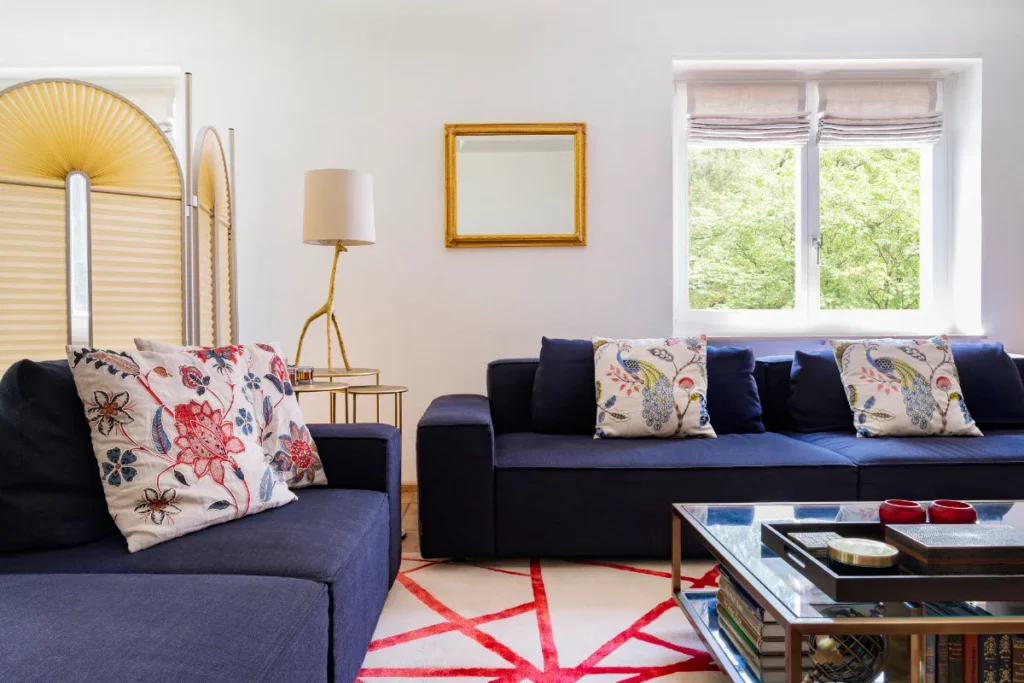
Photo Credit: globalinspirationsdesign
Depending on the upholstery material, every sofa has a unique set of maintenance requirements. Some people disregard this and end up with a settee that requires more maintenance than they are willing to provide.
Before purchasing a sofa, it is crucial to consider its maintenance requirements. You may want to choose a sofa with stain-resistant or easy-to-clean fabric, for instance, if you lead a hectic lifestyle or have young children.
Alternatively, if you have the time and inclination to invest in routine maintenance, you can consider options with delicate fabrics and intricate designs.
Failing to Test the Comfort and Functionality
Prior to making a purchase decision, buyers frequently fail to consider the sofa’s comfort and functionality. Do not be afraid to sit on the settee, adjust the cushions, and determine if it provides sufficient back support.
Additionally, if applicable, try the functionality of any additional features, such as reclining mechanisms or convertible designs. Taking the opportunity to actually use the sofa will enhance your understanding of its comfort and functionality.
Not Considering the Doorway and Staircase Dimensions
It’s easy to get caught up in the enthusiasm of purchasing a new sofa and overlook practical considerations, such as fitting it through your doorways and up your stairs.
Before making a purchase, measure your doorways, hallways, and any other confined spaces where the sofa must fit. This will prevent you from realizing that your ideal sofa will not fit in your home.
Overlooking the Warranty and Return Policy
Another common error is disregarding the furniture store’s or manufacturer’s warranty and return policy. A comprehensive warranty protects you against manufacturing defects and premature deterioration.
In addition, the sofa can be returned or exchanged if it does not satisfy your expectations. Review the terms and conditions thoroughly to understand the coverage and procedures in the event that you encounter problems with the sofa.
Not Researching the Reputation of the Retailer
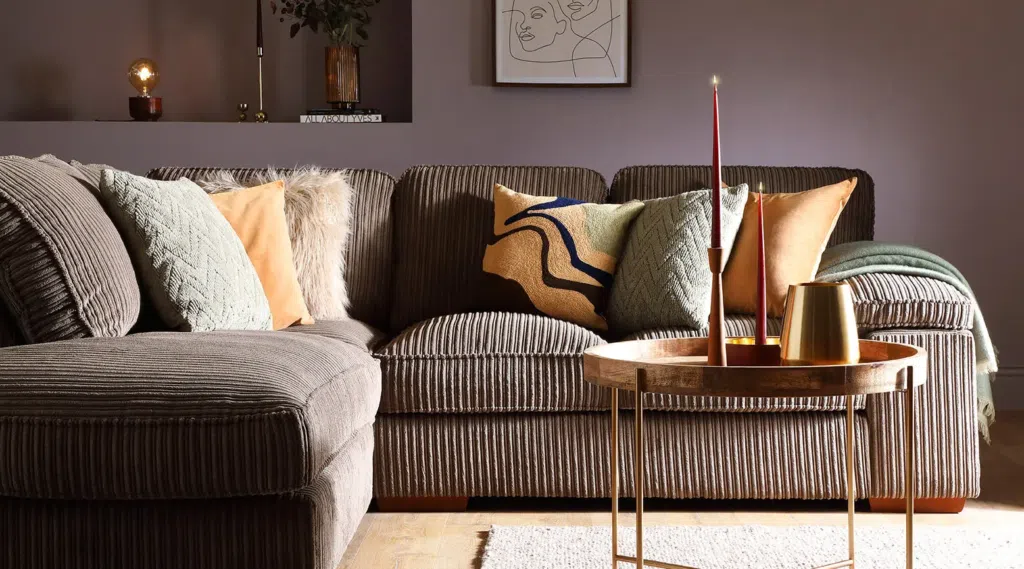
Photo Credit: bigfurnituregroup
It is crucial to purchase a sofa from a reputable retailer. Some consumers make the error of ignoring this factor, resulting in poor customer service or low-quality goods.
Before making a purchase, investigate the retailer’s reputation by perusing customer reviews, examining their ratings, and confirming their credentials.
A trustworthy retailer will not only provide a vast selection of high-quality sofas but also provide superior customer service throughout the purchasing process.
FAQs (Frequently Asked Questions)
Bottom Line
The purchase of a sofa is a significant choice that requires cautious consideration. By avoiding common errors, such as failing to measure your space, disregarding comfort, and ignoring maintenance needs, you can ensure that you make an informed decision.
Before making a purchase, remember to prioritize both form and function and to evaluate the item’s comfort and quality.
For added peace of mind, investigate the reputation of the retailer and take advantage of warranties and return policies. By adhering to these guidelines, you will be well on your way to finding a sofa that complements your living room and provides years of comfort.
